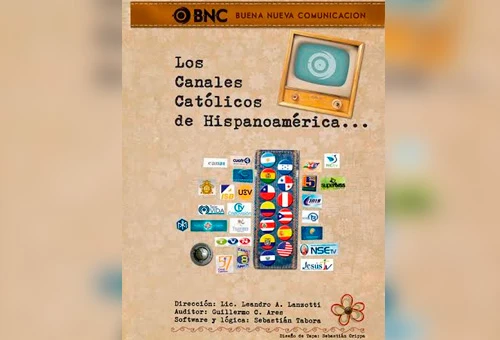
ROSARIO, 31 Jan. 14 / 1:29 pm ( ACI / EWTN News ) -. Gospel Communication (BNC) of Rosario (Argentina) today released a new study, performed with the collaboration of the Catholic Radio & Television Network (CRTN) of Germany, in which reality and the new challenges of the Catholic television in Latin America is analyzed.
study entitled “Latin Catholics channels” arises from the initiative of the Director of BNC, Leandro Andrés Lanzotti, who claims to respect that “we saw that it was important reviews on this, the largest group of Catholics channels. It was necessary that we address them know, help them to know themselves, their strengths and weaknesses and face new challenges, and others understand a little better what we mean when we say ‘Catholic networks in Latin America’ “<. / p>
The study was developed from mid-2012 and consists of 53 questions on personal channels, audiences, funding, programming and staff training needs. They were responsible for the survey 37 Catholic television channels of Spanish-speaking countries of America, of which 23 responded in 15 of them.
study results, the researchers believe that the Catholic television in Latin America “today presents a panorama, and static at all, from many angles, surprisingly novel. It’s clearly an area prepared for any effort made to support them, build cooperation and levels of training and growth. “
Regarding human resources, the TV channels have groups ranging from 6 to 150 people working at a station, where the average is over fifty. Of this figure, 66% receive a salary and the rest is voluntary. As for the age of the staff, most strip ranges from 26 to 45 years and older account for 76% of staff. As for the old 55% have less than 5 years working in the place although 45% have worked there for 5 years.
Aboutfunding, private donations reach 25% while commercial entries are the 43%. This point is made largely from the sale of advertising but services like studio rental and equipment, selling time for secular productions and other items such programs “telesales”.
While each local Church, foundations, universities and other Catholic institutions, make a contribution, are the same channels that have explored various ways to sustain funding annually.
Most stations broadcast 24 hours, with an average of 22 hours. Asked about the “content type”, the result gave 55% “with religious message” and 45% “general message”. The 53% is self-produced and is “talk shows” in studio, interviews, testimonies and talks.
According to the researchers in charge of the survey, “most are still unable to cope with more complex productions, but the great house production, is an attempt to give greater local identity seasons, especially to strengthen securing funding (both grants and advertising) as well as identification with the public and expansion “.
About
staff training, the survey shows that this is important for obtaining funds through membership and / or donations (Fundraising), advertising sales and marketing and the creation of new content and programs.
The report can be downloaded http://bncweb.tv/encuestas/estadisticas
Tags: Television, Latin America, Catholic Television
No comments:
Post a Comment